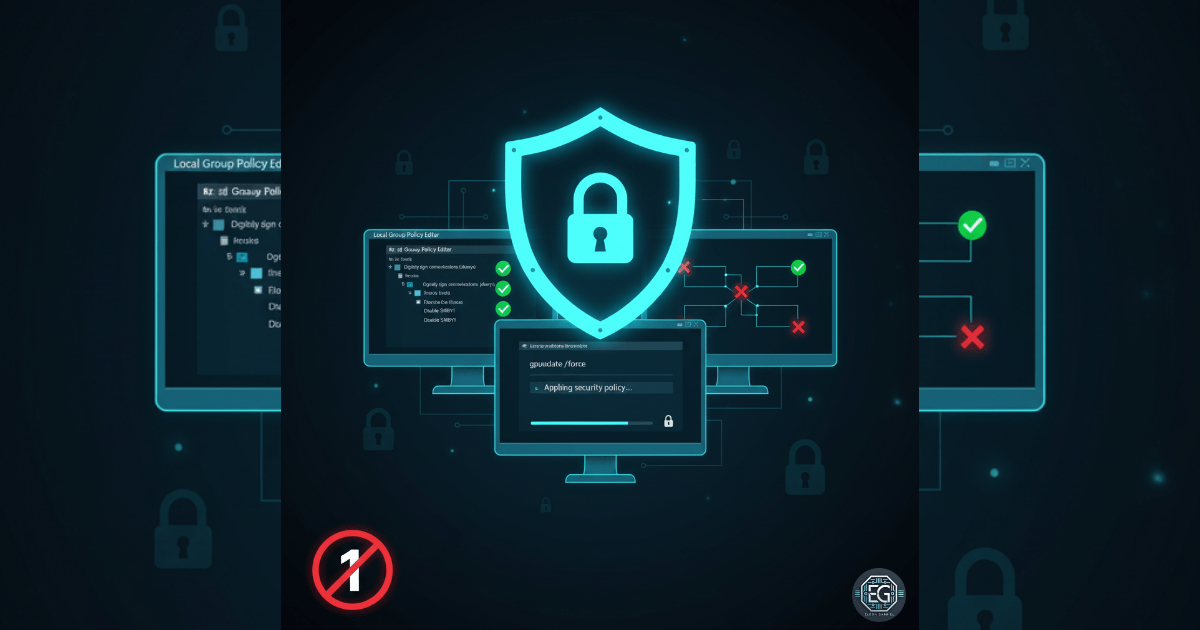Securing SMB communications is a practical, high-impact control for stopping credential theft and session hijacking before attackers can move laterally. In this exercise I hardened a standalone Windows endpoint using Local Group Policy (LGPO) and a registry change to:
- Enforce SMB signing for both clients and servers,
- Disable the legacy SMBv1 protocol, and
- Block unencrypted password exchanges while applying an idle session timeout.
These steps close common attack vectors used by tools that capture or replay SMB authentication traffic.
Applying the Policy
I used Local Group Policy paths and a registry edit to configure client and server SMB settings, and verified SMBv1 was disabled.
Why This Matters
Unsigned or legacy SMB traffic can be intercepted, replayed, or manipulated by an attacker. Enforcing SMB signing ensures data integrity and authentication, while disabling SMBv1 removes an outdated attack surface. Together, these controls reduce the risk of credential theft and lateral movement.
Professional Relevance
This exercise maps to practical job tasks and industry frameworks:
- NICE (NIST): System Administration (OM-SA-001) — configuring and validating OS security controls.
- ASD Cyber Skills Framework: Secure System Configuration (SS-02) — applying configuration standards to reduce exploitable features.
Key Takeaways
- SMB signing enforces data integrity and authentication, stopping packet tampering and replay attacks.
- Disabling SMBv1 applies Least Functionality, removing legacy attack surfaces exploited by real-world malware.
- Idle session timeouts reduce exposure windows for hijacked or abandoned sessions.
- Local Group Policy demonstrates repeatable endpoint hardening that scales into enterprise GPOs.
See my report below for a complete technical summary and validation of this lab exercise:


